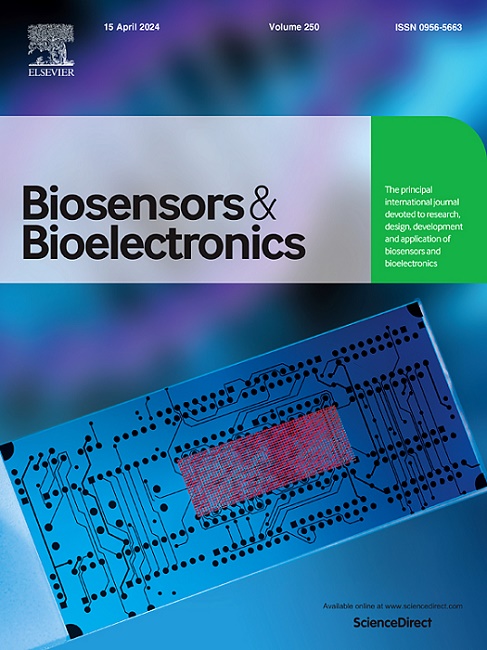Non-destructive monitoring of cartilage tissue engineering via near-infrared (NIR) spectroscopic assessment of culture medium
IF 10.7
1区 生物学
Q1 BIOPHYSICS
引用次数: 0
Abstract
Degenerative joint diseases are major contributors to pain, impaired mobility, and an increasing socioeconomic burden in aging populations. Tissue Engineering (TE) offers alternative solutions to restore joint functions. However, current TE approaches often fail to produce biocompatible, patient-specific cartilage. This could be due to the lack of a rapid, non-destructive assessment for monitoring tissue growth. Biological markers such as hyaluronan, lactate, and collagen are released in culture medium during tissue maturation, and measuring their levels indicates tissue growth and development. We performed near-infrared spectroscopy (NIRS) on conditioned medium collected during culture and differentiation of Na purified gellan gum (NaGG) embedded bone marrow stem/stromal cell (BMSC) constructs. We also employed NIR preprocessing using Nippy and an unbiased machine learning (ML) approach, where multiple ML regression models like linear regression, ridge regression, random forest regressor, and support vector regressor were used to correlate the spectral variations to the biomarkers released into culture medium. The analysis revealed strong correlations between near infrared (NIR) spectral data and biomarkers, with R2 values of 0.976 for hyaluronan, 0.701 for lactate, and 0.444 for total collagen, and mean absolute percentage errors (MAPE) of 0.276, 0.090, and 0.158 respectively, showing the efficacy of NIRS in monitoring these key indicators. Feature importance further determined key regions of interest in NIR spectra for each of the biomarkers. In conclusion, this research is the first to demonstrate the potential of using NIRS for non-destructive assessment of tissue growth through the culture medium.
通过近红外(NIR)光谱评估培养基的软骨组织工程无损监测
退行性关节疾病是老年人疼痛、活动能力受损和社会经济负担增加的主要原因。组织工程(TE)提供了恢复关节功能的替代解决方案。然而,目前的TE方法往往不能产生生物相容性的、患者特异性的软骨。这可能是由于缺乏一种快速、非破坏性的评估来监测组织生长。在组织成熟过程中,培养基中会释放出透明质酸、乳酸和胶原蛋白等生物标志物,测量它们的水平表明组织的生长发育。我们对Na纯化结冷胶(NaGG)包埋骨髓干细胞(BMSC)构建物培养和分化过程中收集的条件培养基进行了近红外光谱(NIRS)分析。我们还使用Nippy和无偏机器学习(ML)方法进行近红外预处理,其中使用线性回归、脊回归、随机森林回归和支持向量回归等多ML回归模型将光谱变化与释放到培养基中的生物标志物相关联。分析发现,近红外光谱数据与生物标志物之间存在较强的相关性,透明质酸、乳酸和总胶原的R2值分别为0.976、0.701和0.444,平均绝对百分比误差(MAPE)分别为0.276、0.090和0.158,表明近红外光谱在监测这些关键指标方面的有效性。特征重要性进一步确定了每个生物标志物近红外光谱中感兴趣的关键区域。总之,这项研究首次证明了使用近红外光谱对培养基中组织生长进行非破坏性评估的潜力。
本文章由计算机程序翻译,如有差异,请以英文原文为准。
求助全文
约1分钟内获得全文
求助全文
来源期刊

Biosensors and Bioelectronics
工程技术-电化学
CiteScore
20.80
自引率
7.10%
发文量
1006
审稿时长
29 days
期刊介绍:
Biosensors & Bioelectronics, along with its open access companion journal Biosensors & Bioelectronics: X, is the leading international publication in the field of biosensors and bioelectronics. It covers research, design, development, and application of biosensors, which are analytical devices incorporating biological materials with physicochemical transducers. These devices, including sensors, DNA chips, electronic noses, and lab-on-a-chip, produce digital signals proportional to specific analytes. Examples include immunosensors and enzyme-based biosensors, applied in various fields such as medicine, environmental monitoring, and food industry. The journal also focuses on molecular and supramolecular structures for enhancing device performance.
 求助内容:
求助内容: 应助结果提醒方式:
应助结果提醒方式:


